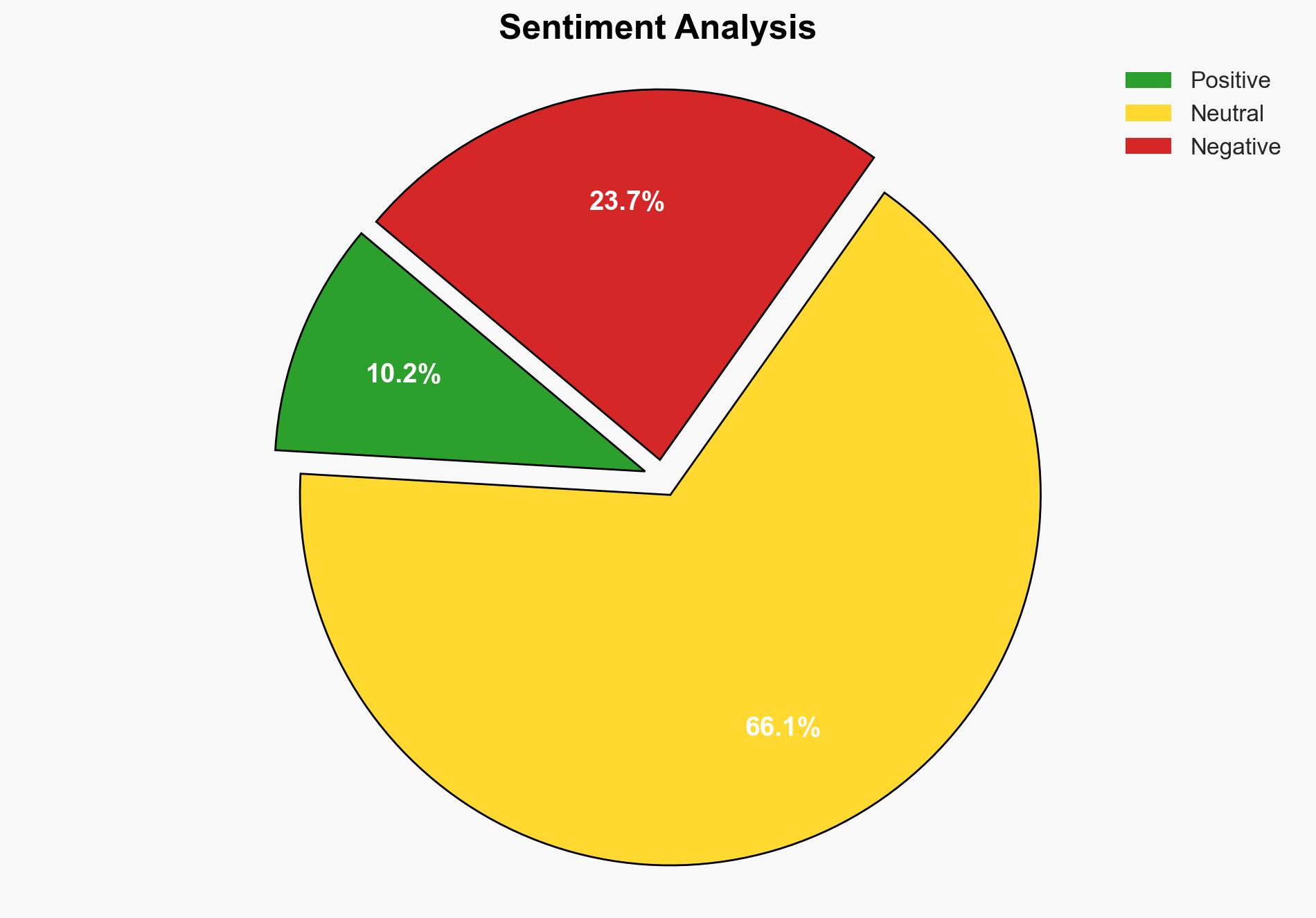RECOMMENDED AI fakes and manipulated images inflamed real-life fighting as Syria saw its worst violence since the dictatorship fell – DW (English)
Published on: 2025-03-11
Intelligence Report: RECOMMENDED AI fakes and manipulated images inflamed real-life fighting as Syria saw its worst violence since the dictatorship fell – DW (English)
1. BLUF (Bottom Line Up Front)
The recent surge in violence in Syria, exacerbated by disinformation campaigns utilizing AI-generated fake images and videos, has resulted in significant destabilization. The manipulation of media has intensified sectarian divisions and incited real-world violence, posing a threat to regional stability. Key recommendations include enhancing digital literacy, strengthening media verification processes, and fostering international cooperation to counter disinformation.
2. Detailed Analysis
The following structured analytic techniques have been applied for this analysis:
General Analysis
The violence in Syria over the weekend was significantly fueled by disinformation, with AI-generated content playing a pivotal role. Reports indicate that manipulated images and videos were used to incite violence, particularly in areas like Jableh. The disinformation campaigns appear to be coordinated efforts by malicious actors, aiming to exploit sectarian tensions and destabilize the region further. The lack of reliable media sources in Syria has made social media a primary information channel, increasing vulnerability to misinformation.
3. Implications and Strategic Risks
The disinformation campaigns pose several strategic risks, including:
- Increased sectarian violence and deepening divisions within Syrian communities.
- Potential for broader regional instability as external actors, such as Iran and its proxies, exploit the situation.
- Challenges to the legitimacy and effectiveness of the new Syrian government, undermining efforts for national reconciliation.
- Risk of international escalation if disinformation campaigns are linked to foreign interference.
4. Recommendations and Outlook
Recommendations:
- Enhance digital literacy programs to educate the public on identifying and countering disinformation.
- Strengthen media verification processes to ensure the authenticity of information disseminated through social media.
- Foster international cooperation to develop frameworks for identifying and mitigating disinformation campaigns.
- Encourage dialogue between Syrian communities to address sectarian tensions and promote reconciliation.
Outlook:
Best-case scenario: Successful implementation of counter-disinformation measures leads to reduced violence and improved stability in Syria.
Worst-case scenario: Continued disinformation exacerbates sectarian violence, leading to further regional destabilization and potential international conflict.
Most likely outcome: Ongoing challenges in combating disinformation result in periodic violence, with gradual improvements as countermeasures are implemented.
5. Key Individuals and Entities
The report mentions significant individuals and organizations involved in the events:
- Zouhir Al Shimale – Researcher and communication manager involved in verifying disinformation.
- Noura Aljizawi – Activist and researcher highlighting the impact of disinformation on Syrian communities.
- Razan Rashidi – Director of an advocacy organization addressing the challenges posed by disinformation.





